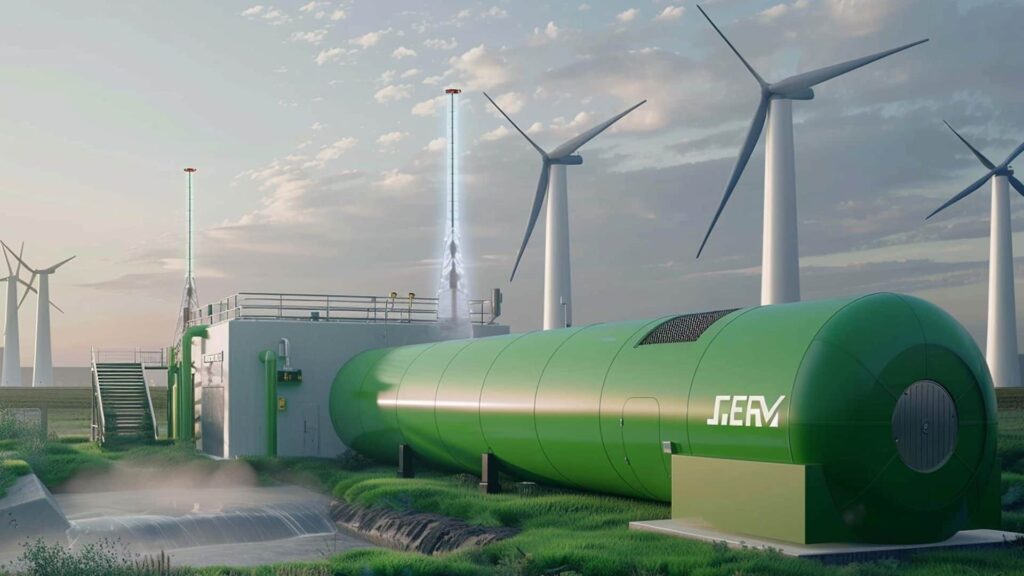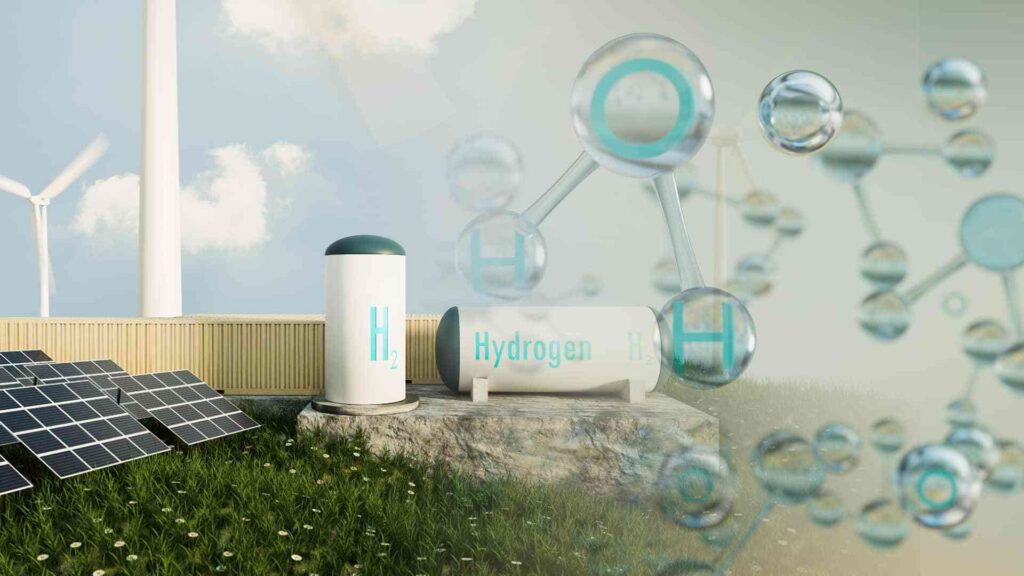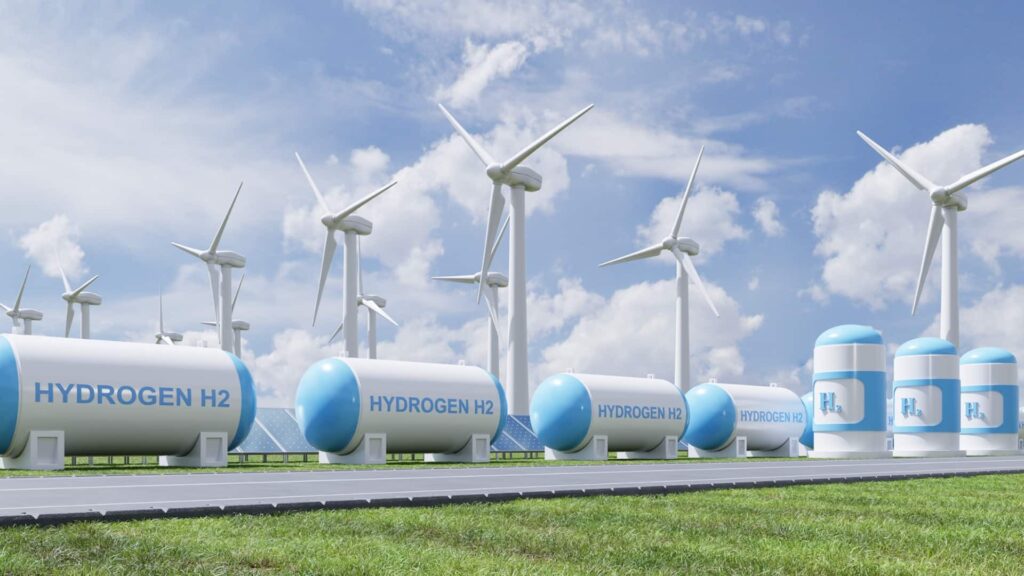Green hydrogen is a key component of the global shift to sustainable energy and the achievement of net-zero emissions. Green hydrogen, created by electrolyzing water using renewable energy sources, can revolutionize the production of renewable energy. It has advantages for the environment, technological developments, financial results, and contribution to the global decarbonization agenda.
It is a climate-neutral substitute for conventional hydrogen production techniques like grey and blue hydrogen, which require high carbon emissions since it is created by splitting water into hydrogen and oxygen using renewable electricity. This provides a sustainable means to decarbonize businesses and energy systems, in contrast to blue hydrogen, which aims to collect CO2 but cannot eliminate emissions, and grey hydrogen, which is made from coal or methane and has high emissions.
Green hydrogen is gaining power worldwide and is a key component of plans and strategies for reducing emissions in heavy industries, shipping, aviation, and long-haul shipping. Governments throughout the world are investing in infrastructure and research to reduce production costs and boost acceptance, while initiatives like the Green Hydrogen Catapult seek to greatly scale up green hydrogen production.
Its production through electrolysis is still costly, even though renewable electricity is currently cost-competitive in many areas. Making green hydrogen economically feasible requires increasing the use of renewable energy sources, producing electrolyzers, and making calculated investments. In contrast, blue hydrogen confronts difficulties with cost-effectiveness and long-term sustainability due to its reliance on carbon capture technologies and fluctuating natural gas prices.
Meeting rising energy demands while lowering greenhouse gas emissions is a double issue facing the global energy sector. It has drawn loads of interest as a flexible and sustainable energy source that can help with these issues. This is created using renewable energy, which results in very low carbon emissions, in contrast to conventional hydrogen, which is usually sourced from fossil fuels. The emergence of green hydrogen and its potential to transform energy generation are examined in this research.
What’s green hydrogen?

Hydrogen generated by water electrolysis using renewable energy sources like sun, wind, and hydropower is referred to as “green hydrogen.” Using an electric current, water molecules (H2O) are split into hydrogen (H2) and oxygen (O2). This process’s lack of fossil fuels guarantees a carbon-neutral product.
Important Features
- Sustainable energy sources are the foundation of renewable production.
- Energy Carrier: Capable of effectively storing and moving energy.
- Versatility: Fit for a range of uses, such as power generation, industry, and transportation.
Benefits of Green hydrogen

1. Advantages for the Environment
Green hydrogen is an essential weapon in the fight against climate change because it emits no greenhouse gases during manufacture or use. In comparison to energy systems that rely on fossil fuels, it also lowers air pollution.
2. Grid Stability and Energy Storage
Renewable energy sources, such as solar and wind, are irregular. Even when renewable generation is low, green hydrogen may retain excess energy produced during periods of peak production, guaranteeing a steady supply of energy.
3. Use in Industry
Green hydrogen can be used to replace fossil fuels in hard-to-decline industries including heavy transportation, steel production, and chemical manufacturing, greatly reducing their carbon footprints.
4. Self-Sufficiency in Energy
Countries can improve energy security by lowering their need for imported fossil fuels by manufacturing green hydrogen domestically.
Challenges to overcome

- Green hydrogen has potential; however, there are several obstacles in the way of its widespread use:
- High Production Costs: When compared to more conventional techniques of producing hydrogen, electrolysis is still a costly procedure.
- Infrastructure Requirements: It takes a lot of money to build infrastructure for refueling, transportation, and storage.
- Dependency on Energy Input: Significant renewable energy capacity is needed for the production of green hydrogen on a large scale.
- Market and Policy Uncertainty: Investment may be hampered by a lack of long-term policy commitments and uniform laws.
Impact on the Economy

Significant economic prospects are anticipated as a result of green hydrogen, including the development of hydrogen infrastructure and the creation of jobs in the renewable energy sector. As technology advances, it is also expected to lower long-term energy prices.
Forecasts for the market:
The demand from transportation and industry is expected to propel the worldwide green hydrogen market to over $300 billion by 2030.
Significant economic gains could result from investments in this hydrogen infrastructure, especially in areas with a wealth of renewable energy sources.
Contribution to Decarbonization
To meet the targets of the Paris Agreement and other global climate goals, green hydrogen is essential. Reducing emissions in hard-to-electrify industries like heavy industry and aircraft enhances renewable electricity. It also encourages the creation of synthetic substances and fuels that are carbon neutral.
Previous to tackling industries like shipping and aviation, the transition to a green hydrogen economy involves decarbonizing current gray hydrogen usage, such as the manufacturing of ammonia. Synthetic fuels and green ammonia provide short-term fixes for these sectors. Commercial vehicles that run on hydrogen might be feasible by 2030, and other developments might result in more widespread uses, such as hydrogen ships and aircraft.
In order to decarbonize hard-to-abate sectors, policymakers are recommended to concentrate on energy efficiency, electrification, quicker growth in renewable energy, and scaling up bioenergy and green hydrogen technologies. To fully utilize green hydrogen and accomplish net-zero emissions by 2050, strong legislation, international collaborations, and strategic collaboration will be necessary.
A revolutionary prospect for the creation of renewable energy, green hydrogen provides a means of decarbonizing vital industries, stabilizing energy systems, and promoting economic expansion. Even though there are still obstacles to overcome, its popularity is being fueled by continuous technical developments, encouraging laws, and infrastructure expenditures. It has the potential to be the next big thing in renewable energy production as the world moves toward a sustainable energy future.













